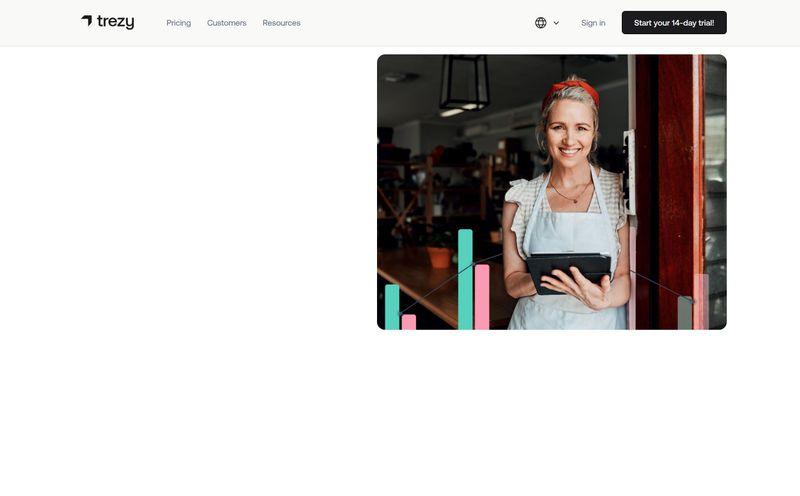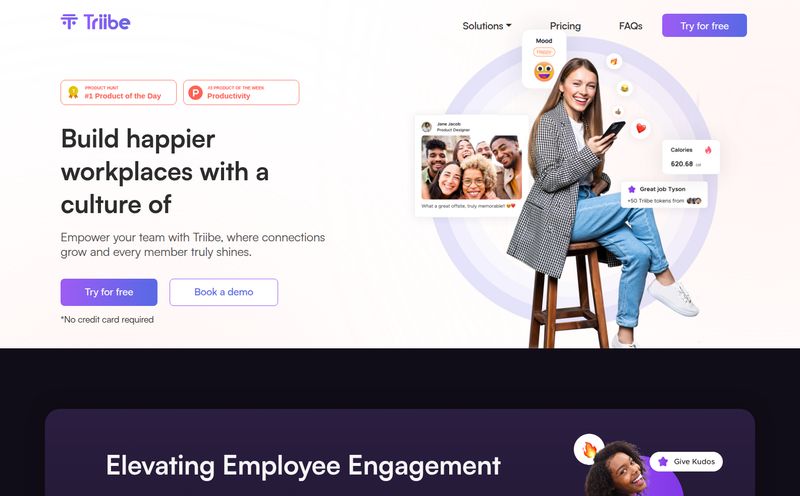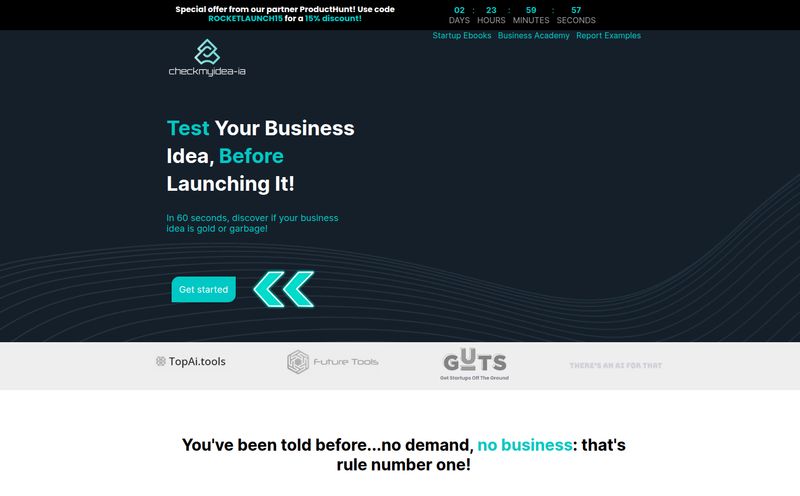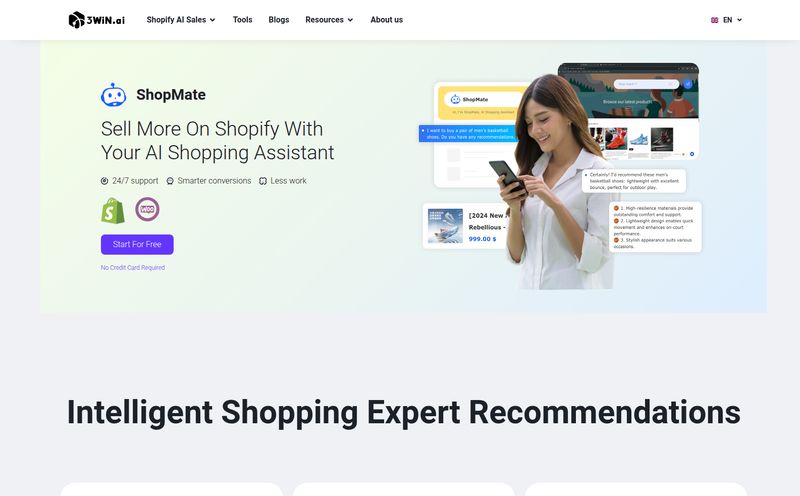If you're in SaaS, product, or marketing, your customer feedback probably looks like a Jackson Pollock painting. It’s chaotic, it’s everywhere, and while you know there’s meaning in there somewhere, good luck explaining it to your board. We've all been there, staring at a spreadsheet filled with NPS comments, support tickets, and random G2 reviews, trying to connect the dots. It’s a data firehose pointed directly at your face.
For years, we’ve manually tagged, sorted, and tried to quantify this stuff. It's a soul-crushing, time-sucking task that's always two steps behind the actual customer conversation. So, when a platform like Syncly comes along, waving the “AI-Powered Intelligence” flag, my inner skeptic and my overworked inner product manager both sit up and pay attention.
They claim to turn that chaotic mess of raw feedback into structured, actionable insights. A big claim. But after digging into what they’re doing, I have to say… I’m intrigued. This might just be the translator we need to finally understand what our customers are really saying.

Visit Syncly
So, What is Syncly, Really?
Okay, let’s cut through the marketing jargon. Syncly is a Customer Feedback Intelligence Platform. Think of it as a central brain for all your customer opinions. It plugs into the places where you’re already talking to users—think Zendesk, Intercom, Front, Gorgias—and pulls all that conversational data into one place.
But it doesn't just store it. That would just be a fancier, more expensive spreadsheet. The real magic, or so they say, is in its AI. It reads, understands, and categorizes every piece of feedback instantly. That angry ticket about a bug? Tagged. That glowing review mentioning a specific feature? Tagged. That subtle hint of frustration in a seemingly neutral comment? Syncly’s AI is designed to pick up on that too through sentiment analysis. It’s basically a data archaeologist, digging for the hidden treasures buried in your support logs.
Why You Should Even Care About This Stuff
Look, we get tons of data. Traffic, conversions, bounce rates... we live and die by these metrics. But qualitative data—the why behind the numbers—has always been the tricky part. Customer feedback intelligence isn’t just about making support teams more efficient. It’s about shifting from a reactive to a proactive mindset.
- Instead of waiting for users to churn, you spot the warning signs in their feedback and intervene.
- Instead of guessing what to build next, you see the feature requests and pain points bubbling up in real-time.
- Instead of siloing feedback in the support department, you give your product, marketing, and leadership teams a direct line to the voice of the customer.
This is about making the customer an active participant in your growth, not just an entry in your CRM. And frankly, any tool that helps with that is worth a second look.
A Look at Syncly's Core Features
Alright, let's pop the hood and see what makes this thing tick. It’s not just one big AI blob; it's a collection of tools that work together.
The AI-Powered Brains of the Operation
This is the heart of Syncly. The platform’s AI doesn't just look for keywords. It uses natural language processing (NLP) to understand context and sentiment. This is how it can differentiate between a customer sarcastically saying “Great, another bug” and a genuinely happy user. It’s designed to instantly categorize feedback, which saves teams hundreds of hours of manual work. I’ve seen teams of people dedicated to doing exactly this, and they can barely keep up.
Customizable Taxonomy: Speak Your Business's Language
Here’s something I really like. Syncly isn’t rigid. It allows you to create a customizable taxonomy. In plain English, that means you can teach it to categorize feedback according to what matters to your business. You can create tags for “UI/UX Friction,” “Pricing Concerns,” or “Feature Request: Dark Mode.” This ensures the insights are actually relevant to your team's goals and language, not some generic, out-of-the-box system that doesn’t quite fit.
Personalized Dashboards: Your Mission Control
Data without context is just noise. Syncly provides personalized dashboards that let you visualize trends. You can track sentiment over time, see which bugs are getting the most complaints, or monitor how a new feature launch is being received. These reports are shareable, which is a huge plus. It’s one thing for the product manager to know what’s going on; it’s another to be able to show a clean, data-backed chart to the CEO in a weekly meeting.
Real-Time Alerts & Proactive Churn Prevention
This is the feature that can directly save you money. You can set up real-time alerts for specific triggers. For example, you could get a Slack notification every time a high-value customer expresses negative sentiment. This is a game-changer. It turns your support team into a retention machine, allowing them to jump on a problem before it becomes a cancellation notice. It’s the digital equivalent of a store manager noticing a frustrated shopper and asking, “Can I help you find something?”
Integrations for a Single Source of Truth
A tool is only as good as the data it can access. Syncly knows this, offering one-click integrations with major customer service platforms like Zendesk, Intercom, Front, and Gorgias. This is critical. By pulling everything into one place, it breaks down the data silos that plague most organizations. The support team's insights are now the product team’s insights, which are now the marketing team’s insights. This creates a unified view of the customer experience.
A Quick Word on Security (SOC 2)
For those of us who have to deal with IT and legal, this is important. Syncly is SOC 2 Type II certified. This is a high-level security audit that demonstrates they have serious procedures in place to protect your—and your customers'—data. It’s a box-ticker, for sure, but a very important one if you’re a larger company or handle sensitive information.
The Good, The Bad, and The Realistic
No tool is perfect. Let's get real about what works and what might be a hurdle. Based on the platform's own info and my experience with similar tools, here's my take.
| The Upside | Potential Downsides |
|---|---|
| Turns a flood of qualitative data into actionable, quantifiable insights. The value proposition is crystal clear. | Requires an initial setup. It's not a magic wand you just wave; you'll need to connect your systems and configure it. |
| The proactive churn prevention via alerts is a massive, tangible benefit. This alone could pay for the tool. | Its effectiveness is tied to your feedback volume and quality. If you only get a few comments a month, you won't get as much value. It's a GIGO (Garbage In, Garbage Out) situation. |
| The integrations create a true "single source of truth," breaking down departmental silos. That’s a strategic win. | There might be a learning curve. For teams not used to analytics platforms, they'll need some time to get comfortable and learn how to interpret the data properly. |
| SOC 2 Type II certification means it's enterprise-ready and takes data security seriously. | The AI, while powerful, isn't infallible. You'll still need a human to review and provide context for nuanced feedback. |
So, How Much Does Syncly Cost?
Ah, the million-dollar question. Or, hopefully, a bit less. As of right now, Syncly doesn't have a public pricing page. The pricing page on their site currently leads to a 404 error, which happens to the best of us. This typically means one of two things in the SaaS world: they're either revamping their pricing or, more likely, they operate on a custom/enterprise model.
You’ll need to "Book a Demo" or "Talk to a Customer Expert" to get a quote. This is common for platforms that need to scale based on data volume, integrations, and the number of users. Don't let it put you off; it often means you'll get a plan that's better suited to your specific needs rather than a one-size-fits-all package.
My Final Take: Is Syncly Worth the Demo?
If you're a product manager, customer success lead, or a founder who feels like you’re drowning in feedback, then my answer is a resounding yes. It's absolutely worth the 30-minute demo.
Syncly isn't just selling a tool; it's selling clarity. It’s offering a way to finally quantify the qualitative, to put a number on sentiment, and to hear the quiet signals before they become a loud roar of customer churn. The ability to centralize feedback and get proactive alerts is, in my opinion, a huge leap forward from the manual spreadsheet hell many companies are still living in.
Sure, you'll have to invest some time in setup, and its power depends on having a steady stream of feedback. But the potential to build better products, reduce churn, and align your entire company around the voice of the customer is a pretty compelling reward. It’s one of those tools that, if it works as promised, could become the most valuable subscription you pay for.
Frequently Asked Questions About Syncly
- 1. What exactly does Syncly do?
- Syncly is a Customer Feedback Intelligence Platform. It uses AI to automatically collect, analyze, and categorize customer feedback from various sources (like support tickets and chats) to provide actionable insights on customer sentiment, product issues, and feature requests.
- 2. What platforms does Syncly integrate with?
- Syncly offers one-click integrations with major customer communication platforms, including Zendesk, Intercom, Front, and Gorgias, to create a single source of truth for all customer feedback.
- 3. Is Syncly suitable for small businesses?
- While any business can benefit, Syncly seems best suited for companies with a significant volume of customer feedback. Its value grows with the amount of data it can analyze. Startups with a high number of user interactions or mid-to-enterprise level companies would likely see the biggest ROI.
- 4. How does the AI-powered sentiment analysis work?
- It uses natural language processing (NLP) to understand the emotional tone behind the text. It can identify not just keywords but the context to determine if the feedback is positive, negative, or neutral, and even flag subtle things like urgency or frustration.
- 5. Is my customer data safe with Syncly?
- Yes, Syncly takes security seriously. It is SOC 2 Type II certified, which is a rigorous, third-party audit that verifies the company has strict security policies and practices in place to protect customer data.
- 6. How do I get pricing information for Syncly?
- Syncly uses a quote-based pricing model. You need to contact their sales team or book a demo through their website to get a price tailored to your company's needs, such as data volume and required integrations.



